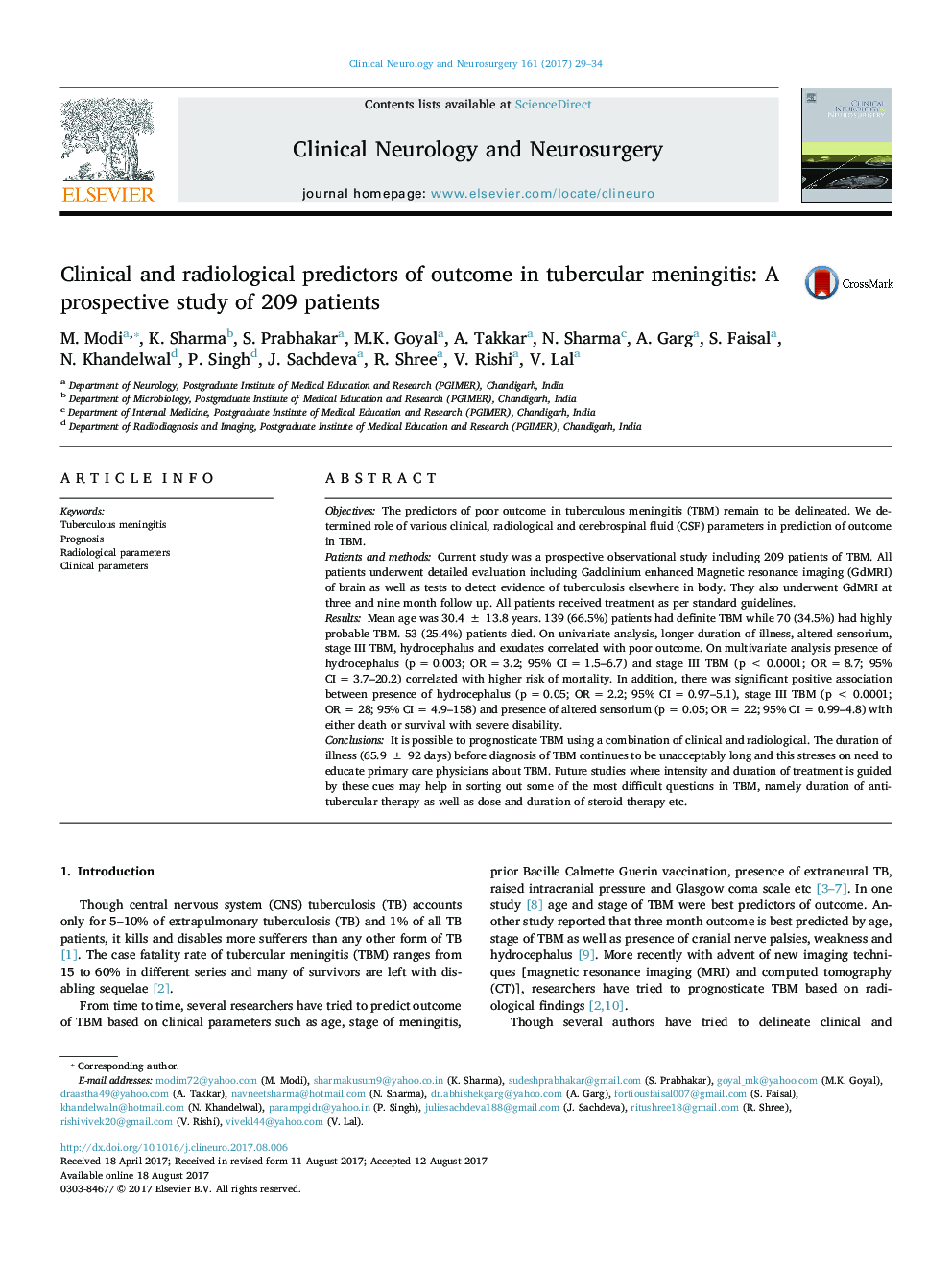| کد مقاله | کد نشریه | سال انتشار | مقاله انگلیسی | نسخه تمام متن |
|---|---|---|---|---|
| 5626974 | 1579661 | 2017 | 6 صفحه PDF | دانلود رایگان |
- Mortality of tuberculous meningitis (TBM) is high (25.4%) in developing countries.
- 13.5% of survivors are left with serious residual sequalae.
- Stage 3 TBM, altered sensorium and hydrocephalus predictor poor outcome in TBM.
ObjectivesThe predictors of poor outcome in tuberculous meningitis (TBM) remain to be delineated. We determined role of various clinical, radiological and cerebrospinal fluid (CSF) parameters in prediction of outcome in TBM.Patients and methodsCurrent study was a prospective observational study including 209 patients of TBM. All patients underwent detailed evaluation including Gadolinium enhanced Magnetic resonance imaging (GdMRI) of brain as well as tests to detect evidence of tuberculosis elsewhere in body. They also underwent GdMRI at three and nine month follow up. All patients received treatment as per standard guidelines.ResultsMean age was 30.4 ± 13.8 years. 139 (66.5%) patients had definite TBM while 70 (34.5%) had highly probable TBM. 53 (25.4%) patients died. On univariate analysis, longer duration of illness, altered sensorium, stage III TBM, hydrocephalus and exudates correlated with poor outcome. On multivariate analysis presence of hydrocephalus (p = 0.003; OR = 3.2; 95% CI = 1.5-6.7) and stage III TBM (p < 0.0001; OR = 8.7; 95% CI = 3.7-20.2) correlated with higher risk of mortality. In addition, there was significant positive association between presence of hydrocephalus (p = 0.05; OR = 2.2; 95% CI = 0.97-5.1), stage III TBM (p < 0.0001; OR = 28; 95% CI = 4.9-158) and presence of altered sensorium (p = 0.05; OR = 22; 95% CI = 0.99-4.8) with either death or survival with severe disability.ConclusionsIt is possible to prognosticate TBM using a combination of clinical and radiological. The duration of illness (65.9 ± 92 days) before diagnosis of TBM continues to be unacceptably long and this stresses on need to educate primary care physicians about TBM. Future studies where intensity and duration of treatment is guided by these cues may help in sorting out some of the most difficult questions in TBM, namely duration of antitubercular therapy as well as dose and duration of steroid therapy etc.
Journal: Clinical Neurology and Neurosurgery - Volume 161, October 2017, Pages 29-34
